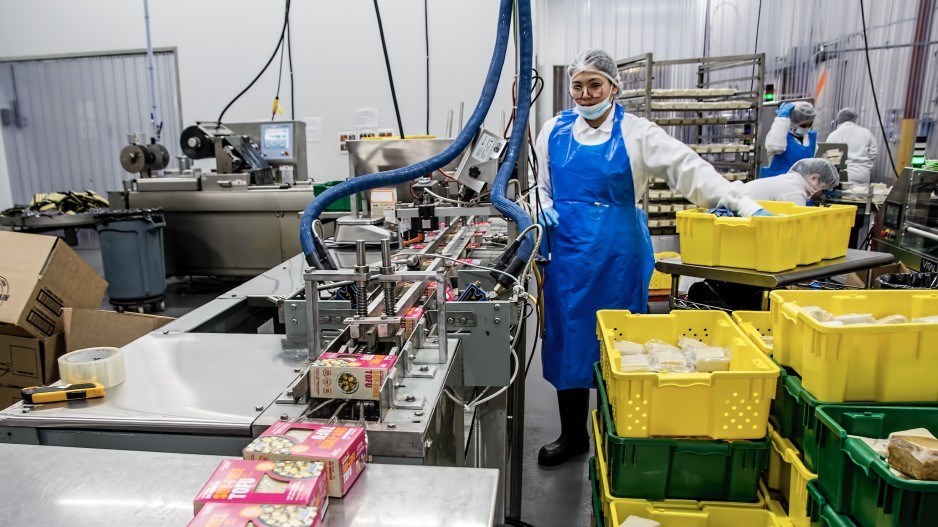B.C. manufacturers saw a year-over-year sales slump in May even though the province's economy and job market remained strong.
Manufacturers in the province generated $5.401 billion in sales in May, down from $5.826 billion in sales in the same month in 2022, according to new Statistics Canada data. came despite B.C. Inflation in the month .
On a month-over-month basis, manufacturing sales in the province in May dipped 0.6 per cent. Much of the decline in manufacturing happened outside Metro Vancouver, which saw manfuacturing sales rise 0.6 per cent year-over-year in May, and rise 3.7 per cent compared with April.
Nationwide, there were many provinces that saw significant slumps. Newfoundland and Labrador, for example, saw manufacturing fall a staggering 47 per cent in May, compared with May 2022. Nova Scotia and New Brunswick saw year-over-year declines in manufacturing sales in the month of 9.9 per cent, and 21.9 per cent respectively. Saskatchewan's 8.4-per-cent decline in manufacturing sales in May also exceeded the drop seen in B.C.
Given the size of the declines, it may be a surprise that Canada's overall manufacturing sales rose year-over-year in May by 0.2 per cent to $72.874 billion. This bump was largely the result of strength in Ontario, which saw a 7.3-per-cent, year-over-year increase in manufacturing sales, to $32.896 billion. That province generates more than 45.1 per cent of Canada's overall manufacturing sales.
Manufacturing sales impact the entire B.C. economy because they comprise much of the province's exports. Workers in the sector are often higher paid than average. Manufacturers also buy products from other B.C. companies.
Despite faltering manufacturing sales, B.C.'s employment count was steady in May – up by about one per cent, compared with the same month in 2022.
B.C.'s manufacturing is tilted more toward natural-resources than is Canada's manufacturing.
Pre-pandemic, the largest manufacturing sub-industries in the province, based on real GDP, were:
• wood products:
• food products;
• primary metal manufacturing;
• fabricated metal products; and
• and beverage manufacturing, according to Statistics Canada.
While wood manufacturing comprised 14.4 per cent of B.C. manufacturing in 2019, for example, it only made up about 4.1 per cent of Canada's manufacturing that year, according to Statistics Canada. In contrast, About 14.4 per cent of Canadian manufacturing in 2019 was transporation equipment manufacturing. In B.C., that niche only accounted for about 5.4 per cent of 2019 manufactuing sales.
The nation's number cruncher this morning said on a month-over-month basis, manufacturing sales increased 1.2-per-cent nationwide, to $72.9 billion in May, following a 0.1-per-cent decline in April. The gain was mainly driven by higher sales of chemical products and motor vehicles, with both of those categories up by 4.8 per cent.
Sales in primary metal manufacturing, which were down 6.9 per cent on a month-over-month basis, decreased the most.

